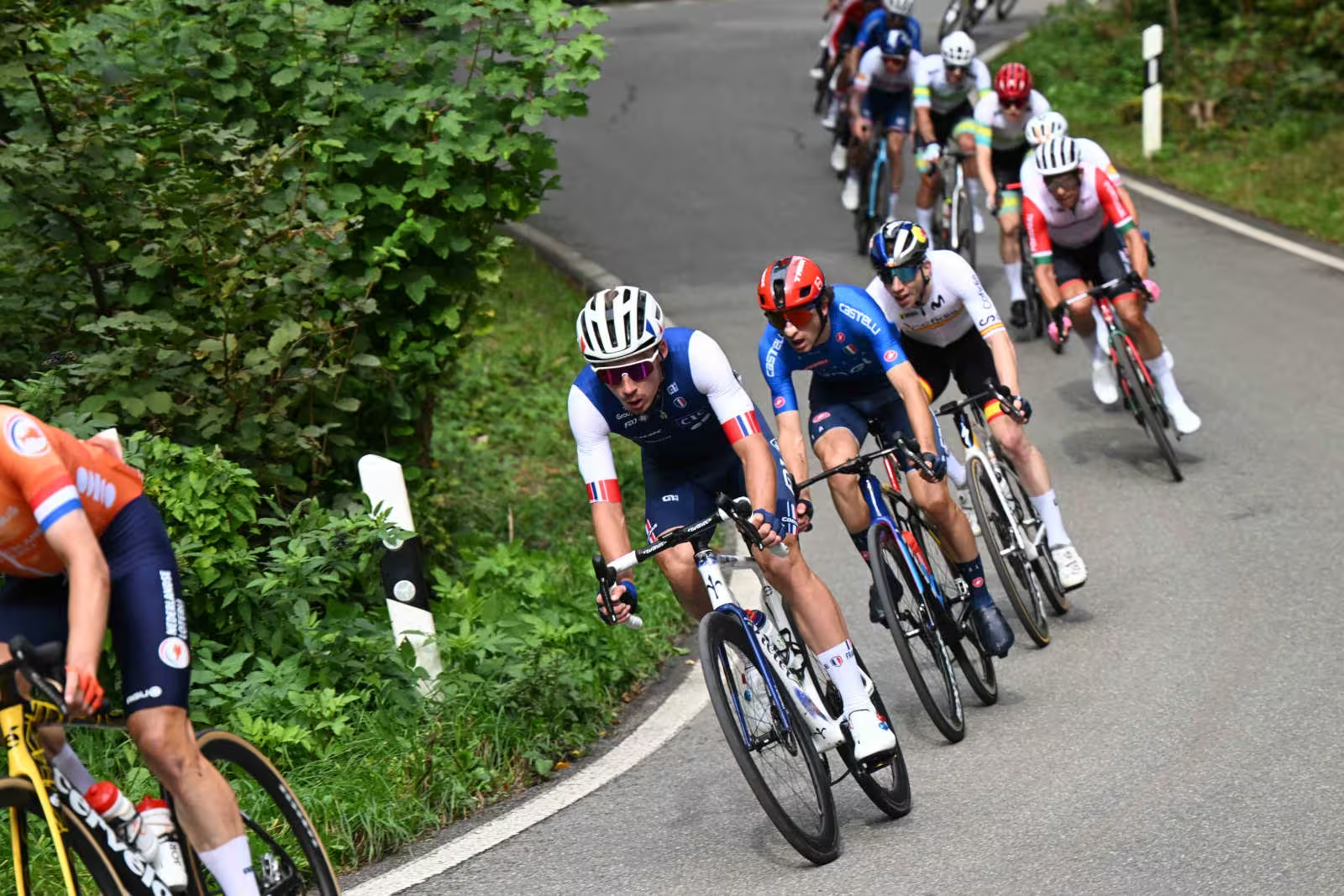Riding in a group, especially when the pace picks up, can be exhilarating and a great workout. Whether it’s a club ride or a race, a pack strung out single file is a remarkable sight—and it’s also pretty tough!
The number 1 way to be a jerk and completely ruin a paceline
When riders are at their limit, the usual rules of pack riding can sometimes be forgotten. At 45 km/h, it can be tricky to point out potholes or obstacles, leading to last-minute swerves that can be dangerous for those behind, especially if wheels are overlapping.
Look up, not down
As the pace increases and you find yourself at the limit behind the wheel ahead, it’s crucial to look up the road as much as you can. This may mean riding slightly toward the gutter to peek ahead. Or, even standing up to get a better view, depending on your height.
While the riders in front should point things out, it’s best not to rely on them. Everyone is likely suffering. The main thing is not to stare at the wheel directly in front of you. This can be dangerous, especially if the pack surges. Get a feel for the distance to the wheel ahead and do your best to keep your gaze forward.
Be aware of surroundings
Being aware of what’s coming is crucial. Whether it’s a car parked close to the road, an obstacle, a corner, or road damage. You want as much warning as possible to be prepared.
Before jumping into a fast group ride, make sure you’ve participated in easier ones to learn about echelons and pacelines. You don’t want to be at your limit while figuring out how to ride in the gutter. Pro cyclists refer to it as a “death line” for a reason—it’s tough!
Movin’ on up
If you find yourself at the back and unable to see ahead, look for opportunities to move up. While it’s not easy to advance in a single-file line, you can take the outside line on a corner or wait for a lull in the pace to make your move. If you’re feeling strong, consider making a significant push to ride into the wind and then signal to a rider behind you to let you in. It’s generally safer at the front of the pack, whether it’s strung out or not, as surges tend to be less intense.
Click Here to Read the Full Original Article at Canadian Cycling Magazine…

